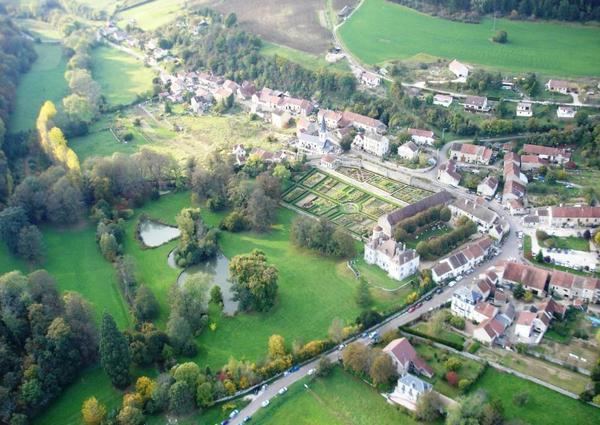Canton Sombernon Time zone CET (UTC+1) | Population (2010) 266 Area 10.76 km² | |
 | ||
Region Bourgogne-Franche-Comté | ||
Barbirey-sur-Ouche is a French commune in the Côte-d'Or department in the Bourgogne-Franche-Comté region of eastern France.
Contents
- Map of 21410 Barbirey sur Ouche France
- Geography
- Mapping
- History
- Administration
- Demography
- Civil heritage
- Religious heritage
- References
Map of 21410 Barbirey-sur-Ouche, France
The inhabitants of the commune are known as Barbirotins or Barbirotines.
Geography
Barbirey-sur-Ouche is located some 25 km south-west of Dijon and 11 km east of Créancey. Access to the commune is by the D33 road from Gissey-sur-Ouche in the north-east which passes through the village and continues south to Saint-Victor-sur-Ouche. The D114 goes west from the village then north-west to Grenant-lès-Sombernon. The commune is heavily forested on the hillsides to the north and south with farmland in the valley.
The Ouche river passes through the commune just east of the village flowing from south to north to eventually join the Saône just east of Saint-Jean-de-Losne. The Ruisseau de la Gironde flows from the west down the valley to join the Ouche near the village. The Canal de Bourgogne (Burgundy Canal) also passes through the commune parallel to the Ouche on the eastern side. There are two locks in the commune - the Écluse de Dainevy to the south and another lock further north.
Mapping
A list of online mapping systems can be displayed by clicking on the coordinates (latitude and longitude) in the top right hand corner of this article. None of these maps, however, show the extent of nor any information on the commune.
History
On 17 March 1794 Jean Vivant Micault de Corbeton (10 May 1725 - 17 March 1794), Chairman of the Parliament of Burgundy in Dijon before the French revolution, Lord of Agey, Meilly-sur-Rouvres, Rouvres-sous-Meilly, Saligny, Liernolles, Maconge, Barbirey-sur-Ouche, Santenay, Pommard, and other places, last Marquis of Joncy, and husband of Marie Françoise Trudaine, was beheaded in the Place du Morimont (now the Place Emile Zola) in Dijon.
Barbirey-sur-Ouche appears as Barbirey fur Ouche on the 1750 Cassini Map and the same on the 1790 version.
Administration
List of Successive Mayors
(Not all data is known)
Demography
In 2010 the commune had 266 inhabitants. The evolution of the number of inhabitants is known from the population censuses conducted in the commune since 1793. From the 21st century, a census of communes with fewer than 10,000 inhabitants is held every five years, unlike larger communes that have a sample survey every year.
Sources : Ldh/EHESS/Cassini until 1962, INSEE database from 1968 (population without double counting and municipal population from 2006)
Civil heritage
The commune has a number of buildings and sites that are registered as historical monuments:
Religious heritage
The commune has several religious buildings and structures that are registered as historical monuments:
